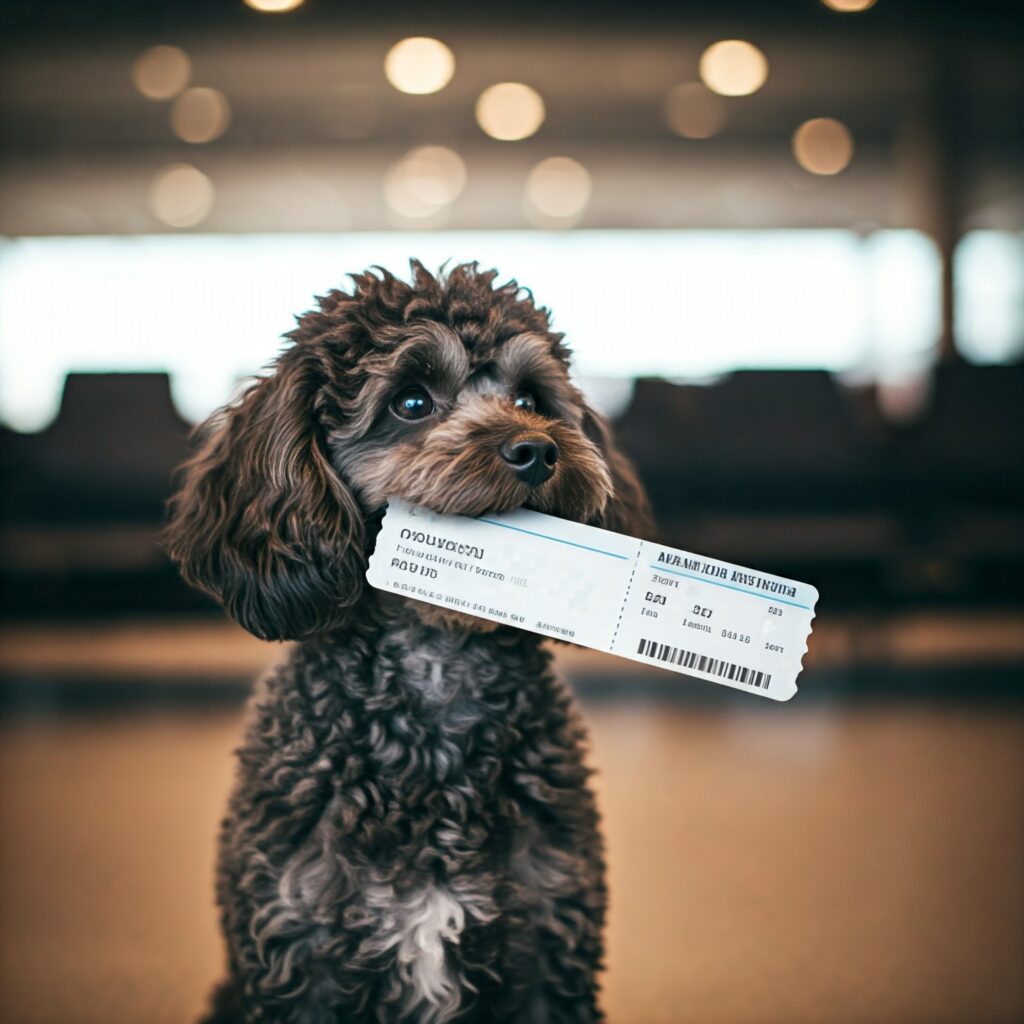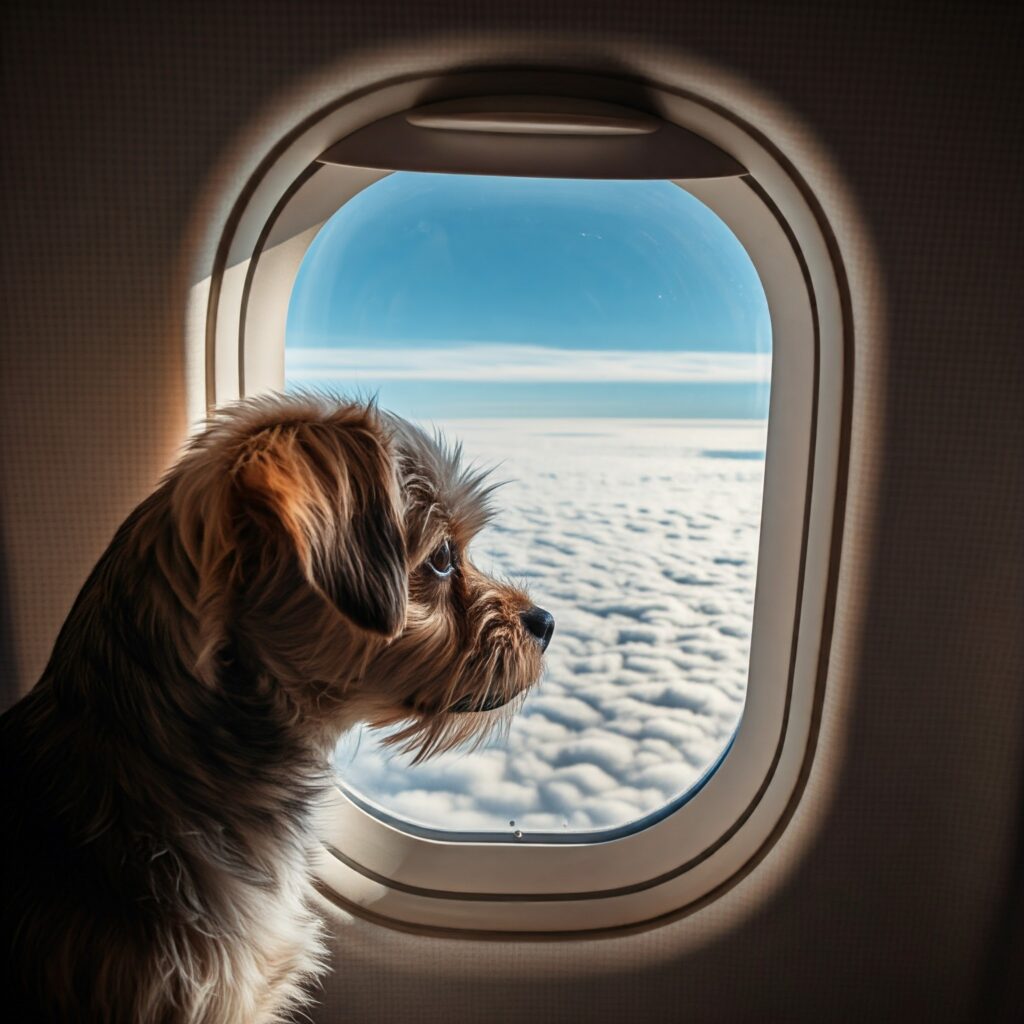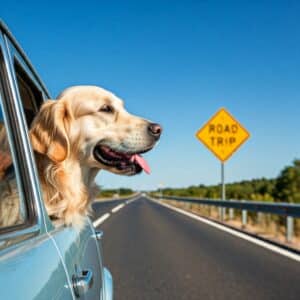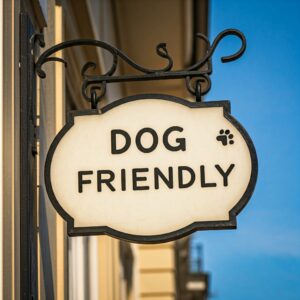Traveling by air with your dog may seem daunting, but with the right preparation, it can be a smooth experience for both you and your furry companion. Whether you’re relocating, going on vacation, or simply bringing your dog along on a business trip, flying with a pet requires careful planning. From choosing the right airline to packing the essentials, there are several steps you can take to ensure your dog’s safety and comfort during the journey.
In this guide, we’ll walk you through everything you need to know about flying with a dog, from booking your flight to navigating airport security and caring for your dog in-flight.

1. Understand Airline Pet Policies
Before you book your flight, it’s important to research the pet policies of the airline you plan to fly with. Airlines have different rules regarding pet travel, so you’ll want to choose one that fits your needs and your dog’s size and breed. Here are a few things to check:
- In-Cabin vs. Cargo: Most airlines allow small dogs to fly in the cabin with you if they fit in a carrier under the seat in front of you. Larger dogs may need to travel in the cargo hold, which requires additional precautions.
- Pet Fees: Expect to pay a pet fee, which can range from $75 to $250 one-way depending on the airline and whether your dog is flying in the cabin or as checked baggage in the cargo hold.
- Breed Restrictions: Some airlines have restrictions on specific breeds, particularly brachycephalic (flat-faced) dogs like bulldogs, pugs, and boxers, which may be more susceptible to breathing difficulties during flight.
- Health Requirements: Some airlines may require a health certificate from your veterinarian, especially for international flights. Be sure to check the specific health documentation required by your airline.
Tip: Book early! Airlines often have a limited number of spots available for pets in the cabin, so the sooner you book, the better chance you’ll have of securing a spot for your dog.
2. Consult Your Veterinarian
Before flying with your dog, it’s a good idea to schedule a visit with your veterinarian. A pre-flight check-up will help ensure that your dog is healthy enough for air travel and that they have any necessary vaccinations. Here are some key considerations:
- Health Certificate: Many airlines require a health certificate issued by a vet within 10 days of travel. This confirms that your dog is healthy and free of infectious diseases.
- Medications: If your dog takes medication, make sure to bring enough for the entire trip and pack it in your carry-on. You should also ask your vet if any medications can help ease your dog’s anxiety during the flight.
- Sedatives: While some owners may consider sedating their dog for travel, most veterinarians recommend against it. Sedatives can interfere with your dog’s ability to regulate body temperature and can make them more susceptible to stress or health issues during the flight.
Tip: Ask your vet for advice on how to keep your dog calm during the flight. They may have recommendations for calming supplements or behavioral strategies to reduce anxiety.
3. Choose the Right Carrier
Whether your dog is flying in the cabin or the cargo hold, choosing the right carrier is critical to your dog’s safety and comfort. The carrier should meet the airline’s specific requirements and be comfortable for your dog to stay in for several hours.
- In-Cabin Carrier: For dogs traveling in the cabin, the carrier must be small enough to fit under the seat in front of you. The carrier should have enough room for your dog to stand, turn around, and lie down comfortably. Most airlines have maximum dimensions for in-cabin carriers, so double-check these before purchasing.
- Cargo Carrier: If your dog is flying in the cargo hold, you will need an IATA-approved (International Air Transport Association) crate. This crate should be large enough for your dog to stand, turn around, and lie down, and it must be well-ventilated and escape-proof.
- Comfort and Ventilation: Make sure the carrier is well-ventilated, and if your dog has a favorite blanket or toy, include it in the carrier to help them feel more comfortable. You can also line the bottom of the carrier with absorbent pads in case of accidents.
Tip: Get your dog used to their carrier well before the flight. Set up the carrier in your home and let your dog explore it, so it feels familiar on the day of travel.
4. Prepare for the Airport
Getting through the airport with your dog requires some extra planning. Here are a few steps to make your time at the airport as stress-free as possible:
- Arrive Early: Make sure to give yourself plenty of time to check in, get through security, and handle any potential issues. Arriving at least 2-3 hours before your flight is recommended.
- Airport Security: At security, you will need to remove your dog from their carrier and carry them through the metal detector while the carrier is x-rayed. Make sure your dog is leashed and under control.
- Exercise Before Your Flight: Take your dog for a walk before going through security to help them burn off energy and go to the bathroom. Many airports have pet relief areas, so take advantage of these to allow your dog to relieve themselves before boarding.
Tip: Bring a leash, waste bags, and any other supplies you might need during your time in the airport. Having everything handy will make the process easier.
5. Flying with Your Dog In-Cabin
If your dog is small enough to fly in the cabin with you, there are a few key things to keep in mind to ensure their comfort during the flight:
- Keep Them Under the Seat: During takeoff and landing, your dog must remain in their carrier under the seat. The carrier should stay closed throughout the flight, but you can comfort your dog by talking to them or offering them a treat if allowed.
- Hydration: Make sure your dog has access to water during the flight. Some in-cabin carriers come with a small water bottle or bowl that can attach to the carrier’s door.
- Keep Calm: Dogs are sensitive to their owner’s emotions, so it’s important to remain calm. If your dog is anxious, your calm demeanor will help reassure them.
- Take Bathroom Breaks: If you’re on a long flight with a layover, try to take your dog outside at the airport to relieve themselves.
Tip: Bring a portable water bottle and a small bowl for water during the flight, especially if the flight is long.
6. Flying with Your Dog in Cargo
For larger dogs that can’t fly in the cabin, the cargo hold is the only option. Flying in cargo can be stressful for both dogs and owners, but with proper preparation, it can be done safely.
- Choose Direct Flights: Direct flights reduce the risk of your dog being in transit for long periods. If possible, choose a non-stop flight to minimize layovers and transfers.
- Label the Carrier: Make sure the carrier is clearly labeled with your contact information, including your phone number and destination address.
- Avoid Extreme Weather: Avoid flying with your dog during extreme weather conditions, particularly during summer or winter. The cargo hold can be subjected to temperature fluctuations, so it’s best to fly during mild weather.
- Track Your Dog: Many airlines offer services that allow you to track your pet’s journey, so you can check in on your dog while they are in transit.
Tip: Ask your airline about their temperature and handling policies for pets in cargo. Some airlines have special pet programs that ensure extra care for animals traveling in the cargo hold.
7. Upon Arrival: Post-Flight Tips
Once you’ve landed, it’s time to reunite with your dog and make sure they’re doing well. Here’s how to handle things once you’ve arrived at your destination:
- Check Your Dog’s Condition: When you retrieve your dog from baggage claim or cargo, check that they’re calm and in good condition. Look for any signs of stress or dehydration.
- Give Them Time to Relax: After the flight, give your dog time to settle in and decompress. They may be tired or stressed, so allow them to rest and recover.
- Bathroom Break: Take your dog outside as soon as possible for a bathroom break and some fresh air.
Tip: Take things slow when you arrive, especially if your dog is unfamiliar with the surroundings. Be patient and let them acclimate to their new environment.
Conclusion: Flying with Your Dog Made Easy
Flying with your dog requires planning, patience, and preparation, but it doesn’t have to be stressful. By choosing the right airline, preparing your dog with a visit to the vet, selecting the right carrier, and following these steps, you can ensure that your pet travels safely and comfortably. Whether you’re flying domestically or internationally, taking the time to properly plan and care for your dog will make the experience much more enjoyable for both of you. Happy travels!




